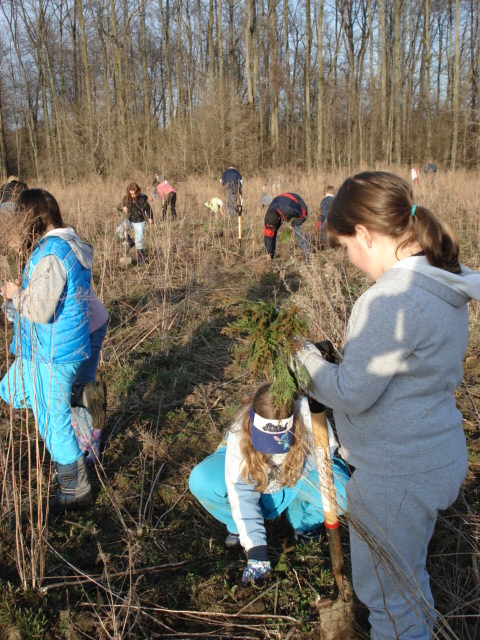ARCHIVE EQUINE NEWS STORIES
| Current news is available at TheHorsePortal.ca, Equine Guelph's online learning platform for practical, quick learning. Given the vast amount of information on horse health and welfare, Equine Guelph has archived its past news articles from 2002-2020. They are listed below, along with a search function available to find specific healthcare topics. | |
Planting Trees for a Healthy HorseJanuary 2011
by Patricia Lowe, Central Lake Ontario Conservation Authority
The best time to plant a tree was a decade ago; the next best time to plant a tree is – today. The author of that statement is unknown, but was likely the owner of a horse or two and knew full well the connection between planting trees and horse health. So go ahead, order some native trees for planting this spring and your local Conservation Authority will help you get started with a tree plan for your property.
Generally, the best place to plant trees for horse health is just outside the perimeter of the pasture. Planting native trees as opposed to ornamental varieties is important, as they benefit the natural ecosystem and are generally resistant to insect pests and disease. It is important to not over plant and totally shade your pasture, select species that are non-toxic and select trees that suit your wet or dry site conditions. The roots of trees will further stabilize soil, reduce erosion and maintain water clarity, absorbing excess nutrients like nitrates from horse manure. The benefits to a horse include shelter from cold winter and dry summer winds, reduced exposure to sun further decreasing stress to your horse and providing a more comfortable living environment.
Conservation Authorities offer native tree and shrub planting programs at cost and will provide you with advice on species selection suitable to your watershed and beneficial to your horse. Some examples of native and non native trees NOT recommended around your pasture are red maple (Acer rubrum), Cherry (Prunus sp) and Black Locust (Robinia pseudocacia) due to their toxicity to horses and other livestock. Other dangerous trees include oaks (Quercus sp), horsechestnut (Aesculus hippocastanum), Kentucky coffee tree (Gymnocladus dioicus), pin cherry (Prunus pensylvanica), pine (Pinus sp) and yew (taxus sp). If you already have some of these trees on your property and they are small enough, simply transplant them out of your horses reach. If they are too large, fencing around them or re-aligning pasture fencing is a simple solution to protect your equine friends.
Spring is an excellent time to plant, as bareroot trees can be purchased in bulk quantities at wholesale costs through your local Conservation Authority. Not sure which of the 36 Conservation Authorities you should contact, check out the provincial map and contact listing on the Conservation Ontario website at www.Conservation-Ontario.on.ca.
This article has been prepared by the Healthy Lands for Healthy Horses Steering Committee, which is comprised of representatives from the Ontario Equestrian Federation’s Horse Facilities Council, Uxbridge Horseman’s Association, Ontario Trail Riders Association, Equine Guelph, University of Guelph, Ontario Ministry of Agriculture, Food and Rural Affairs and various Conservation Authorities. Funding for events organized by this committee has been provided by the Ontario Soil and Crop Improvement Association from the Nutrient Management BMP Demonstration Grant funding project.
For more information please visit: www.equineguelph.ca/healthylands.php